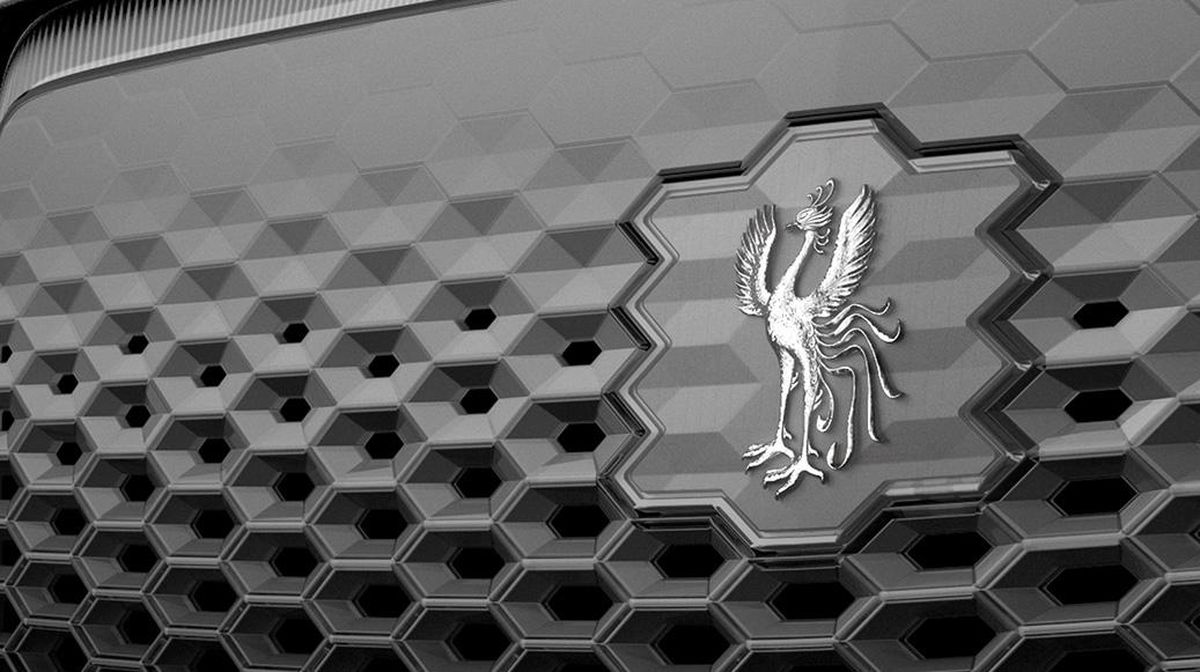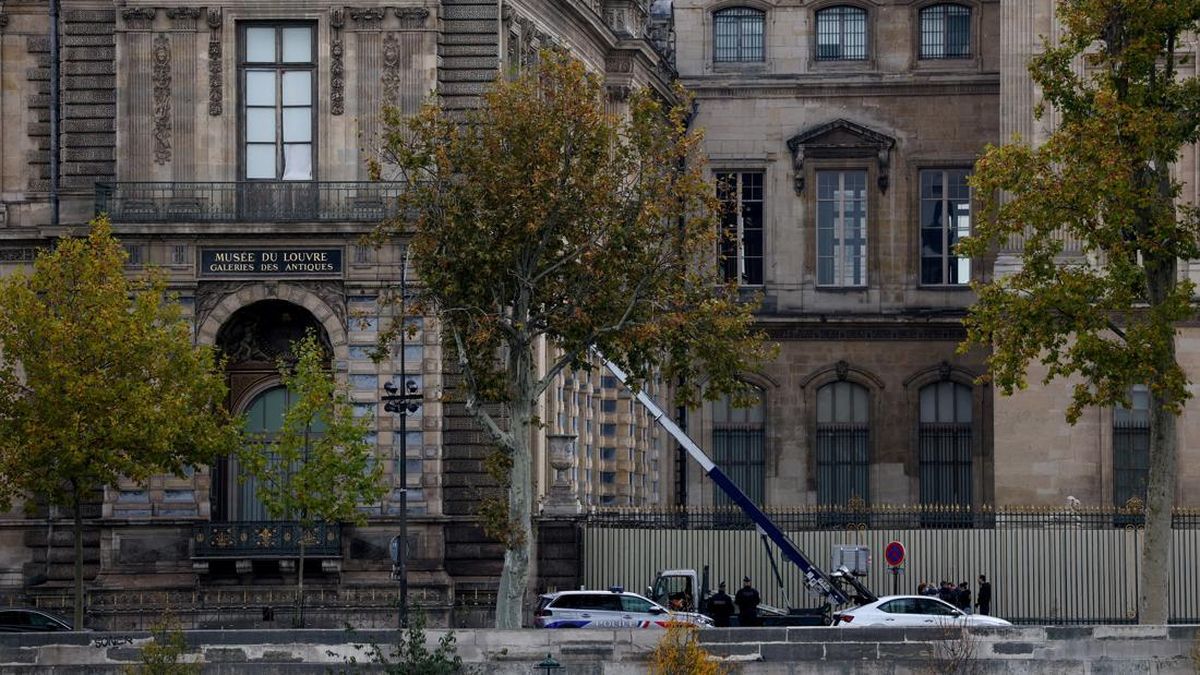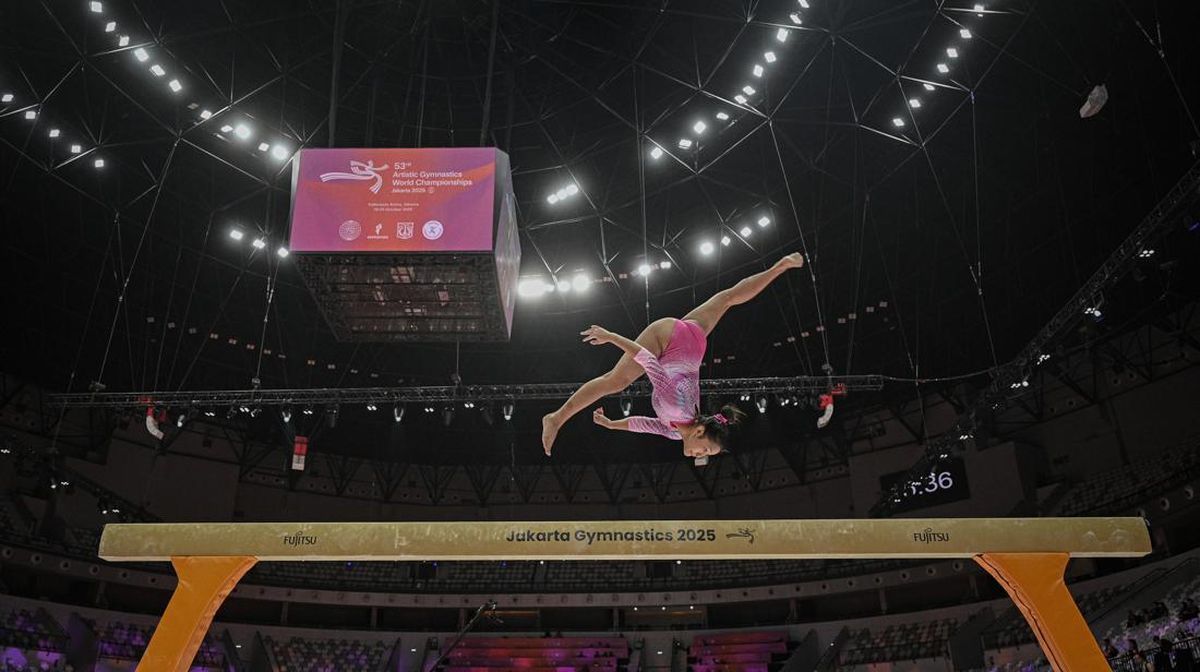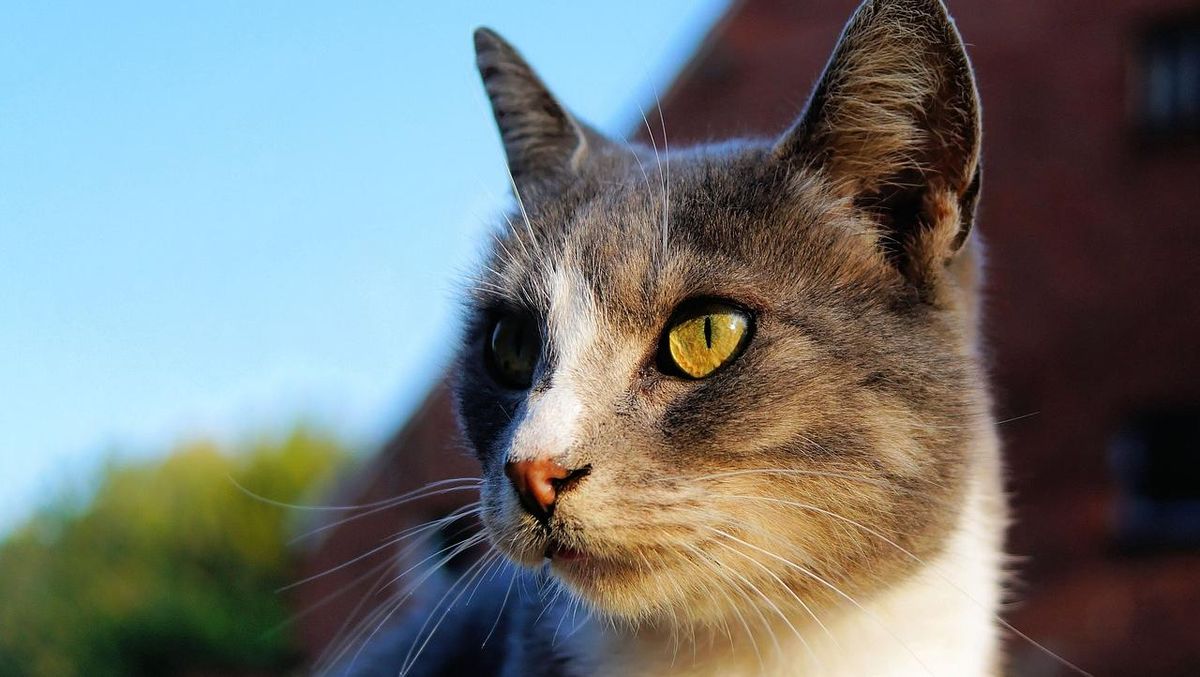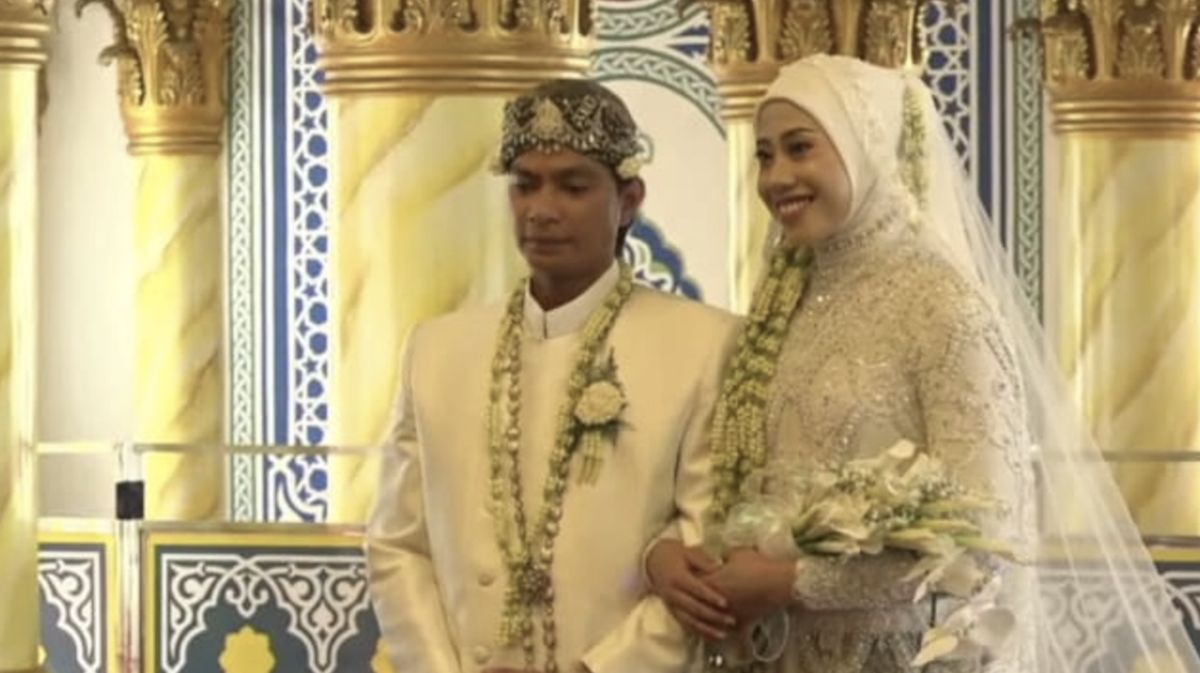In August, American realist portraitist Amy Sherald and correspondent Anderson Cooper were wrapping up a tour of the artist's retrospective at the Whitney Museum in New York City when they arrived at what she called the "pinnacle" of the show.
"Ecclesia (The Meeting of Inheritance and Horizons)" is three massive paintings with curved canvases on top, each featuring a Black person in brightly-colored clothing gazing out from a watchtower.
The watchtowers appear to float in a bright blue sky, with no clues for the viewer as to where they are or what they are facing on the horizon.
Pointing to a woman in one of the paintings, Cooper asked, "Do you have a fully-formed idea of what she is looking for? Or what she's looking for on the horizon?"
"I don't. And I'm OK with that. It's a deeply spiritual moment. I think she's looking towards the future," Sherald said.
"I still ask myself, like, 'Are they on land or are they over water?' I don't know, you know? I like not having the answer to those questions… it's just a mystery, you know?
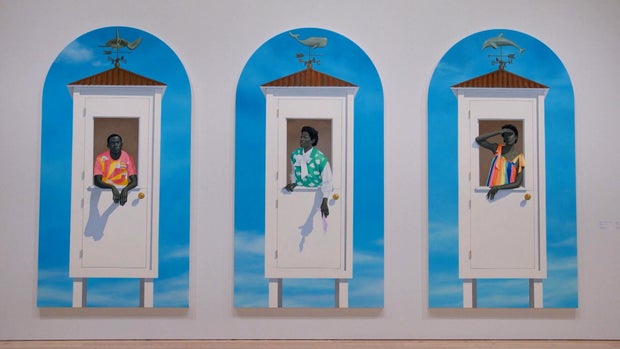 "Ecclesia" on display at the Whitney Museum of American Art for Amy Sherald's retrospective "Amy Sherald: American Sublime."
"Ecclesia" on display at the Whitney Museum of American Art for Amy Sherald's retrospective "Amy Sherald: American Sublime."
"Ecclesia" is a triptych, three paintings that form one cohesive artwork.Triptychs were originally commissioned in the Middle Ages to hang behind an altar in a church.
Sherald said she was inspired by a trip to the Uffizi Galleries in Florence, Italy, where some of the most well-known examples in art history reside.
But she also found inspiration in the work of one of her favorite filmmakers: Wes Anderson.
"The stand was inspired by Wes Anderson, his movie 'The Grand Budapest Hotel,'" she explained to Cooper.
"The bellboy and another character [are] on the run, and they end up in the middle of a snowy field. And in the middle of that snowy field is a random telephone booth… and I just remember freezing that frame and thinking, 'This is something.'"
The paintings are massive in size, and Sherald required scaffolding to reach every corner of the canvas.
It took Sherald some time to adjust to working on a larger canvas; "Ecclesia" and other recent paintings of hers are much larger than previous work.
"I would be up on the scaffold… working on a face, and it would look so good. And then I would step back and I would be like, 'I can't see anything that I did.'"
"So I had to paint with bigger brushes, which was different for me."
She told Cooper that the three paintings that form "Ecclesia" took half a year to complete.
"[It's] the exclamation point of this exhibition," she told Cooper.
"It's like the pinnacle for me. This is the last piece that I finished, and I'm hoping that it's pointing me towards a direction that I will go in the future."
Sherald said the retrospective show at the Whitney was "emptying the Rolodex [of everything] in my mind for probably 20 years," and that now, at 52 years old, she was "starting over."
"Is it exciting? Or is it terrifying?" Cooper asked.
"It's both," Sherald said with a smile.
"I know who I am. And I know that I essentially don't make ugly paintings. So I think I'm gonna be OK."
The video above was produced by Will Croxton. It was edited by Patrick Lee.
Photo from Matthew Millman Photography/SFMOMA.
Amy Sherald on her "Ecclesia" triptych
Amy Sherald on "Ecclesia," her most ambitious work yet
(05:57)





